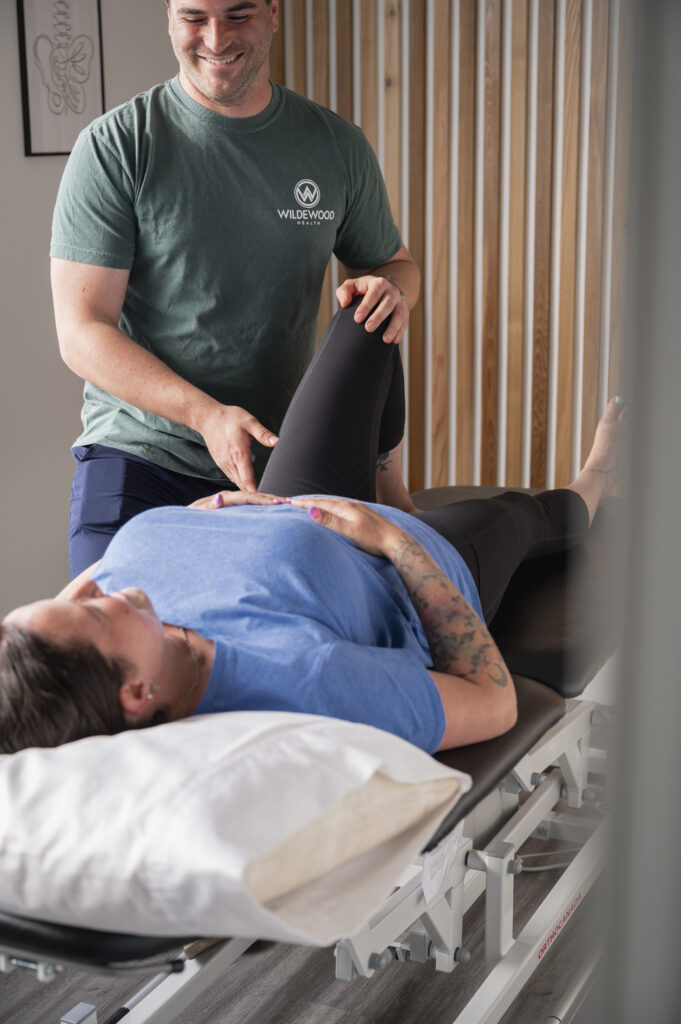Sports injuries are an unfortunate but common occurrence among athletes, from professionals to weekend warriors. When these injuries happen, the path to recovery can be challenging and complex. Physiotherapy, with its holistic approach to healing and rehabilitation, plays a crucial role in guiding athletes back to their optimal performance levels. This blog explores the importance of physiotherapy in sports injury rehabilitation and how it aids in the recovery process.

Understanding Sports Injuries
Sports injuries can range from acute injuries, such as fractures, sprains, and strains, to chronic conditions like tendinitis and stress fractures. The severity and type of injury determine the course of treatment, and this is where physiotherapy steps in to provide a tailored approach to each athlete’s needs.
The Objectives of Physiotherapy in Sports Rehabilitation
The primary goals of physiotherapy in sports injury rehabilitation are to reduce pain, restore function, improve mobility, and prevent future injuries. These objectives are achieved through a combination of manual therapy, exercise prescription, and patient education. Let’s delve into these components:
1. Pain Management
The initial stage of injury rehabilitation often focuses on managing pain and reducing inflammation. Physiotherapists employ various techniques such as ice therapy, heat therapy, ultrasound, and electrical stimulation to alleviate pain and promote healing. By effectively managing pain, physiotherapists help athletes maintain a positive outlook, which is crucial for a successful recovery.
2. Restoring Function
Restoring function is a critical aspect of rehabilitation. Physiotherapists assess the extent of functional impairment caused by the injury and develop a personalized treatment plan. This plan includes exercises that target specific muscles and joints to regain strength, flexibility, and endurance. Techniques like joint mobilization and soft tissue massage are also used to enhance the healing process.
3. Improving Mobility
Injuries often result in reduced mobility and range of motion. Physiotherapy aims to restore full mobility through various stretching and strengthening exercises. Dynamic stretching, proprioceptive training, and functional exercises are incorporated to ensure that the athlete regains the necessary movement patterns required for their sport.
4. Preventing Re-Injury
Preventing future injuries is a vital component of physiotherapy. Physiotherapists educate athletes on proper techniques, warm-up routines, and conditioning programs that are essential to minimize the risk of re-injury. They also conduct biomechanical assessments to identify any underlying issues that could predispose an athlete to injuries.
The Role of Specific Physiotherapy Techniques
Physiotherapy employs a variety of techniques tailored to the type of injury and the athlete’s specific needs:
- Manual Therapy: This involves hands-on techniques like massage, joint mobilization, and manipulation to reduce pain and improve mobility.
- Exercise Therapy: Customized exercise programs are designed to strengthen muscles, improve flexibility, and enhance overall physical fitness. These exercises are progressively adjusted to match the athlete’s recovery stage.
- Electrotherapy: Modalities such as ultrasound, TENS (Transcutaneous Electrical Nerve Stimulation), and electrical muscle stimulation are used to reduce pain and facilitate tissue healing.
- Hydrotherapy: Water-based exercises are particularly beneficial for reducing stress on joints while promoting muscle strength and endurance.
- Dry Needling and Acupuncture: These techniques are used to relieve pain and promote healing by targeting specific trigger points in the muscles.

The Psychological Aspect of Rehabilitation
Physiotherapy also addresses the psychological challenges associated with sports injuries. The rehabilitation process can be mentally taxing, and physiotherapists provide motivation and support to keep athletes focused on their recovery goals. By fostering a positive and encouraging environment, physiotherapists help athletes overcome mental barriers and build confidence in their physical capabilities.
Conclusion
In conclusion, physiotherapy is an indispensable component of sports injury rehabilitation. Its comprehensive approach not only focuses on physical healing but also emphasizes the importance of education and prevention. Through personalized treatment plans and a range of therapeutic techniques, physiotherapists help athletes recover efficiently and safely, enabling them to return to their sport stronger and more resilient than before. Whether dealing with an acute injury or a chronic condition, physiotherapy offers the expertise and support necessary for athletes to regain their peak performance levels.






